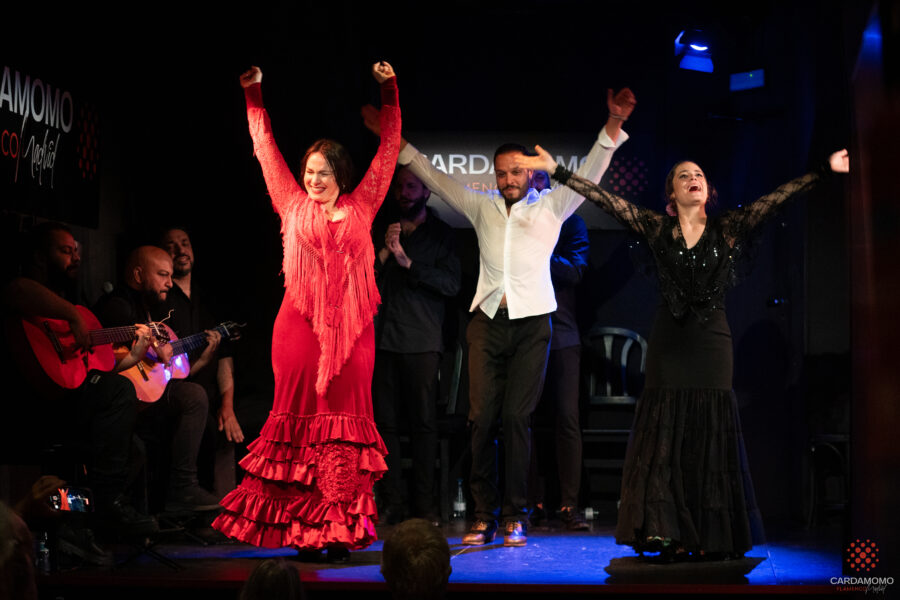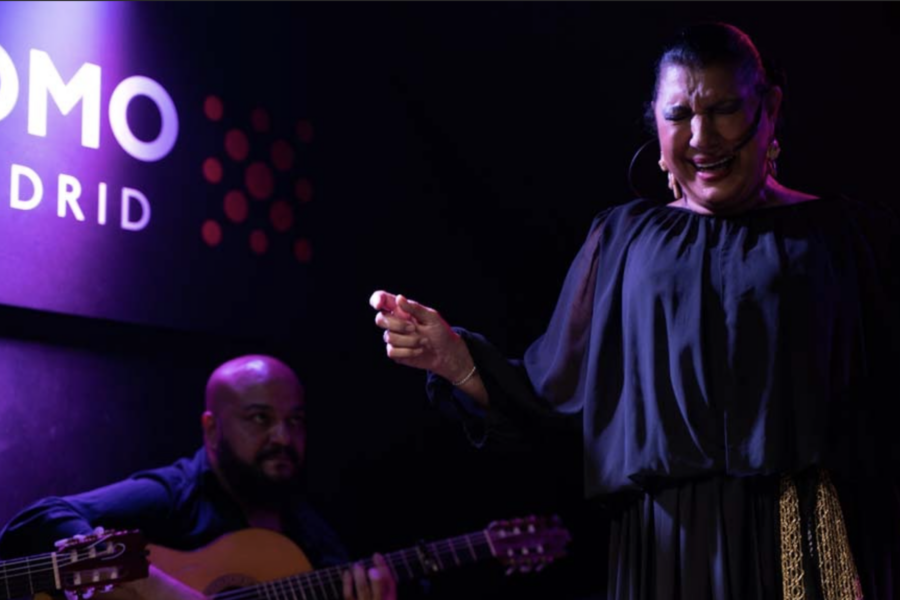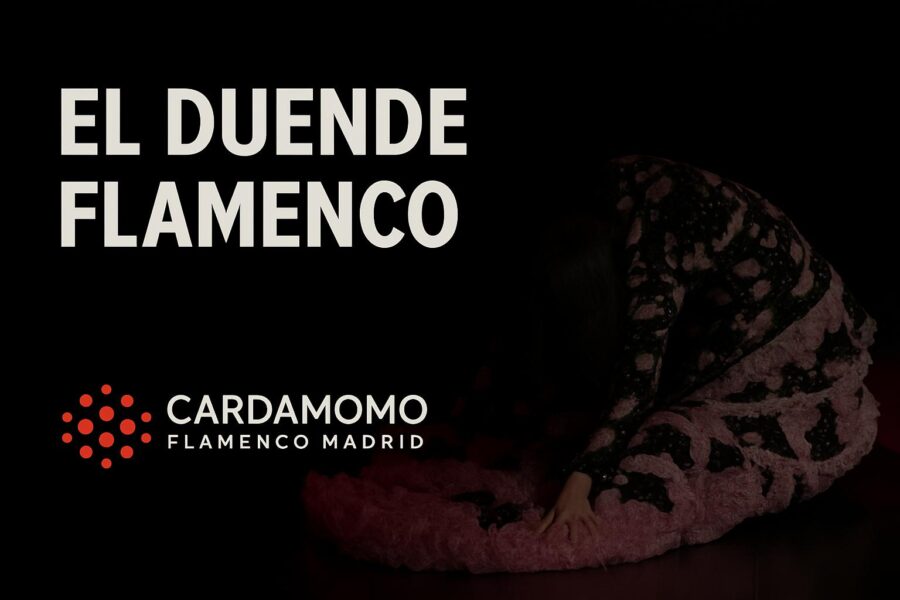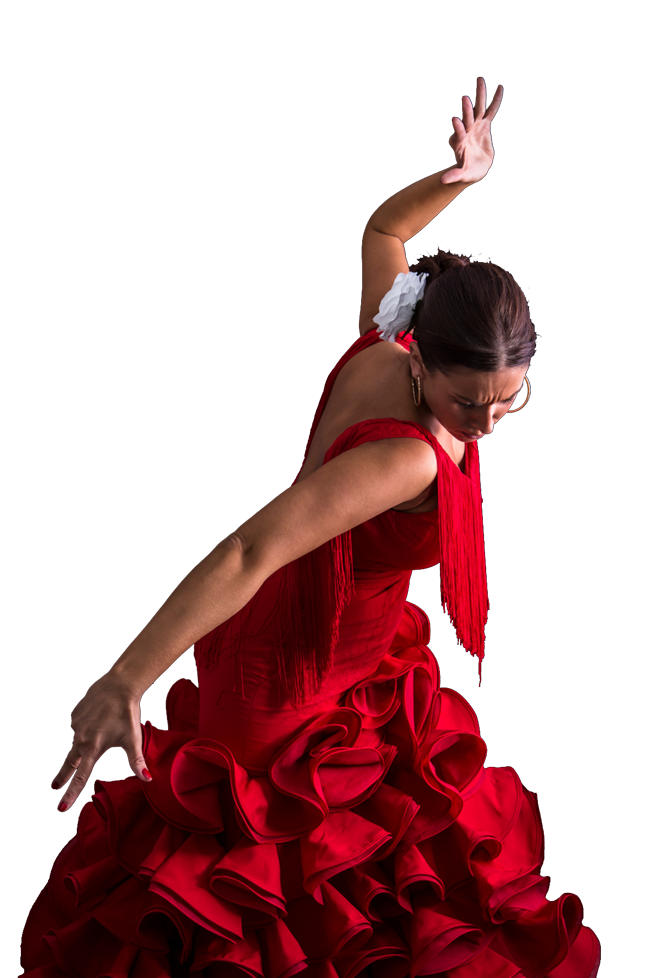There’s a word that changes everything in a tablao: “cuadro”. Listen carefully. Because if you’ve made it this far, it’s because you know a cuadro flamenco is not something you hang on a wall. It’s something alive. That breathes. That sweats. It’s the living organism that is born and dies every night on the stage of Cardamomo.
Forget the idea of a “group.” This is something else. It’s a language. A soul-to-soul conversation in the dialect of skin and rhythm. And today we’re giving you the keys to that secret room. So next time you sit with us, you won’t just watch. You’ll understand the miracle.
The 3 Pillars of a Cuadro Flamenco: Song, Guitar, and Dance
Every cuadro flamenco stands on three pillars which are, in truth, just one. Picture a triangle made of fire.
The cante is the lament. The root. But it doesn’t sing alone; it sings to the dance, to what the body is telling. The guitar is the landscape. It sketches the path with its sound, but it always listens, always responds to the voice’s wound. And then there’s the dance. Oh, the dance! The bailaora or bailaor isn’t just an interpreter. They are the ground. The percussion. The final explosion that gives meaning to everything. They need each other. They search for one another. Without one, the other two limp.
The Secret Language: Glances, Beats, and Silence
How do they do it? How is such precision possible with no script? Magic. A magic of codes.
Picture it. The dancer locks eyes with the guitarist. A second of silence that feels like a lifetime. Then, a sharp dry strike. That’s the llamada. The shout of “Here I am, follow me.” The feet begin to speak in a monologue of frenzied rhythm, the escobilla, and the guitar, obedient, follows. Suddenly, the song breaks and the guitar gifts a falseta, a six-string poem for a breath of air. Everything flows. It’s all a conversation, until, from one last strike, comes the remate. The end. A surge of energy that leaves you breathless. And they knew it. Without speaking, they all knew it was the end.
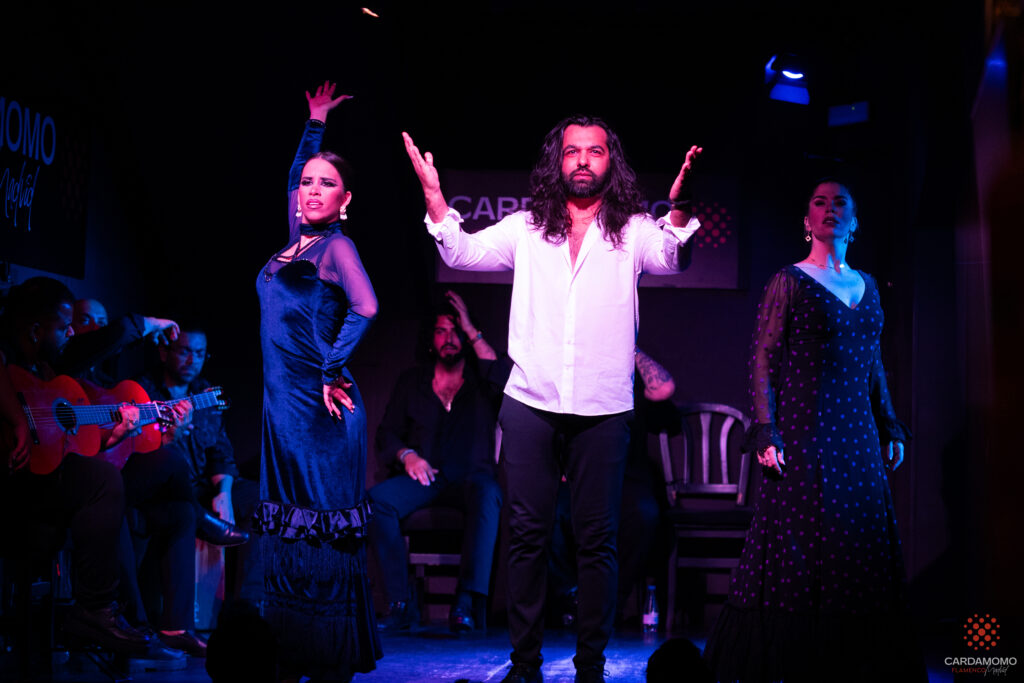
The False Myth of Choreography
So… is it choreographed? That’s the million-dollar question. And here’s the answer that defines the greatness of flamenco: NO.
There’s a map, yes. The palo, the structure of an Alegría, a Soleá. But the journey through that map… that’s unique every night. Radically different. Duende doesn’t follow plans. If it shows up, the singer will stretch a verse to eternity. If the audience pushes, the dancer will invent an ending even she didn’t know was inside her. That’s why this is living art. Daring. Real.
Now you are an accomplice to the art
That’s it. The secret is out. Next time you sit in front of our stage, you won’t see a group of artists. You’ll witness a cuadro flamenco having an intimate conversation before your eyes. You’ll watch the glances. You’ll feel the tension.
You’ll no longer be a spectator. You’ll be initiated. An accomplice.
And now, all that’s left is to live it. We’ll be waiting in the temple.


